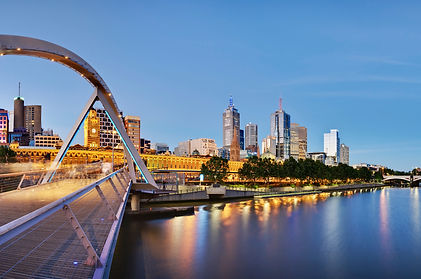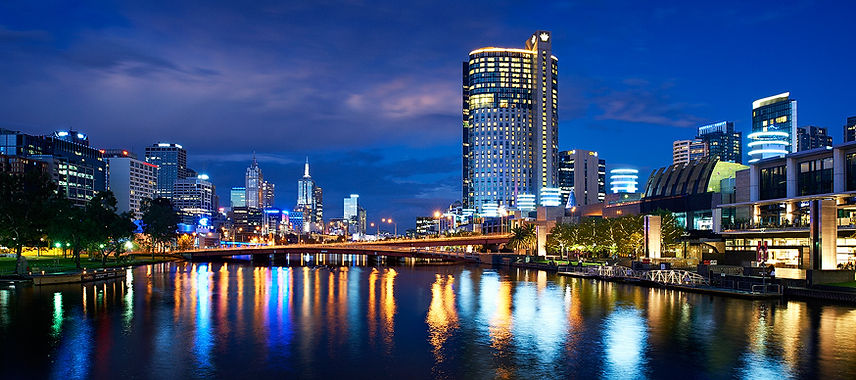Inner North suburbs drive Melbourne opportunity
Melbourne
Real estate growth in Melbourne is being driven by business, education and quality of life, with the city’s Inner North a standout area for investment.
The capital of the state of Victoria is still looking like a strong option for investors looking to diversify into the robust markets of Australia. The country avoided much of the turmoil of the global financial crisis and today stands out as something of a safe-haven.
While investors are urged to be cautious when looking at Sydney, the situation in Melbourne is markedly more positive. The city has a strong long-term track record of consistent growth, with apartment prices rising by an average of 5% per annum over the past decade, and there are several key reasons to be confident of ongoing growth in certain parts of the city.
What's behind Melbourne growth?
There are several main factors driving growth on Melbourne’s real estate markets. The famous Melbourne lifestyle is bringing more and more new residents to the city – an additional 95,000 every year. Such positive population growth has played a vital role in driving housing demand and therefore prices.
Melbourne’s education sector has also been a crucial catalyst for growth. The city is home to 70,000 full-time students – 26,000 of whom have come from overseas – attending more than 30 tertiary institutions. Overall, some 42.5% of the city’s population are now attending a further education institution, significantly higher than the national average.
With world-class facilities and a lifestyle quality that is unmatched internationally, it’s no surprise the QS Best Student Cities 2015 ranks Melbourne as the second-best place in the world for students.
You may have recently seen our blog post on the importance of post-graduate retention in driving economic prosperity. Melbourne is a prime example of an emerging world city that is working to keep students around to contribute to the local knowledge economy. Some 50% of Australia’s postgraduate enrolments between 2002 and 2010 were at Melbourne institutions, and the city is home to 13 major medical research institutes and seven teaching hospitals.
Business growth is also creating opportunities for Melbourne’s graduates. The city is now home to 139 biotechnology firms, while there was a 19.5% rise in creative industry jobs between 2004 and 2010. The seven years to 2012 saw a 27.5% rise in the total number of businesses in Melbourne, with ANZ, NAB, BHP Billiton, Telstra and Rio Tinto – five of Australia’s ten largest companies – among the most prominent companies based in the city.
These developments have been key to Melbourne’s recent economic success, with gross regional product (GRP) up 36% between 2006 and 2012.

DCP international property investment portfolio global real estate markets succeed wealth overseas property investment. Property investment hong kong Real estate investment hong kong

Melbourne Property Outlook
With so much driving it forward, Melbourne’s residential real estate market is moving even faster. Apartment prices were up by a solid 5.7% across 2014, in part driven by strong international demand as more and more global investors begin to see the value.
The general outlook across Melbourne for the next year is also very positive. Forecasts from SQM Research put projected growth in 2015 between 5% and 9%, while some local agents are even more bullish, offering forecasts of closer to 10% for certain areas.
With the Melbourne transaction rate rising alongside prices, there is confidence that market growth will continue, alongside population growth, to drive increased demand. Figures from last year show that over the course of 2013 transactions were up 7.2%, and the average selling time for apartments fell from 49 to just 40 days. All this activity saw Melbourne apartment sales hit an 18-month high at the beginning of 2014.
This increased demand has also kept the rental vacancy rate in the city very tight, at only 2.6% as of August 2014, while average rents were up 1.6% in the year to July.
With price growth outperforming rental growth, there has been a small negative effect on yields. However, investors can still expect a typical annual return of around 4.2% from a tenanted apartment, while in some areas yields of above 5% are still achievable. These are very positive rates compared to the 2-4% typically expected in comparably more stable, established investor markets such as London and New York.
Seeing past central oversupply
The population and price growth being seen in Melbourne has not gone unnoticed by property developers. The rate at which new buildings are going up around the city has reached record levels, leading some to report that the situation in the city has quickly swung from undersupply to oversupply.
As ever, the situation is more complicated than a first glance reveals. While current construction is very high, more than half of the new homes due to complete in the Melbourne council area in 2014/2015 are located in the CBD. Other central areas such as the Docklands, Southbank and Carlton are also seeing much of this construction, with the latter due to see more homes completed across 2014 and 2015 than there were in the entire decade before.
This leaves very little of Melbourne’s construction boom for the rest of a city whose suburbs are crying out for more residential capacity, and it is in these suburbs that Melbourne’s real property investment opportunities are to be found.
Inside the Inner North
With prices having risen rapidly in the centre, many buyers and renters are now looking further afield for a new place to live – an effect that investors know all too well from cities such as London and New York.
This has created a supply-demand situation that is quite the reverse of what is happening in the centre of the city, and prices are already being positively affected.
The Inner North in particular is a region that property investors should be keeping a sharp eye on. While still close to central Melbourne, the Inner North suburbs offer better value along with laid-back lifestyles and trendy reputations that have driven a surge in their popularity.
This new demand has put prices on the rise. Fitzroy, Brunswick, Carlton North and Alphington are key parts of the fashionable Inner North, and they’re also four of the ten Melbourne suburbs that showed the highest growth in rental prices across 2014.
Fitzroy has been considered among the city’s more attractive areas for some time now, and this is reflected in phenomenally high house price growth of 38.5% in the year to September 2014.
Brunswick, now regarded as the place to be, is somewhere investors are particularly interested in however. The city’s creative and young professionals, in search of value and quality of life, are increasingly calling Brunswick home. While price growth in Brunswick has been more in line with the city-wide average, coming in at 9.2% over the same period, there is significant scope for future growth and that now is the time to invest here.
The neighbourhoods of the Inner North also benefit from being long-established residential areas. With short commutes into the CBD, as well as good access to other major employment hubs such as the city’s hospitals, the Inner North is for many locals a far more desirable place to call home than the increasingly built up, and not to mention expensive, city centre.
© 2015 Dynasty Capital Partners (Hong Kong) Limited
---------------------------------------------------------------------------------------------------------------------------------------------------------------------------------------------------------------------------------------------------------------------------------------
Sign up to hear more from us
如您想取得更多资讯

